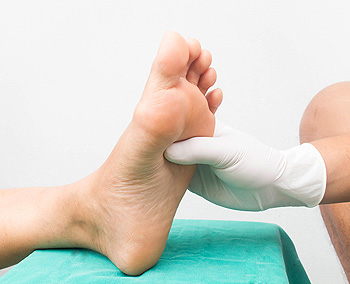 Researchers in the UK are testing a new device, still in clinical trial, that could detect ”hotspots," or areas where an ulcer is likely to occur. The device is about the size of a camera and could potentially prevent diabetic foot ulcers by allowing podiatrists to apply care to a potential hotspot. Right before the skin breaks down, it tends to heat up, which is what the device detects. An ulcer is an open wound, which is generally not a problem for most healthy people. However, an ulcer on the foot of a diabetic can be serious due to poor blood circulation; this affects many diabetics. Due to reduced blood flow, even the smallest of ulcers can potentially not heal and can become infected. This can lead to amputation if the infection is severe enough. Due to the fact that the device is still in-trial, it may not appear in podiatrists’ offices in the US for some time. Regardless, diabetics should practice daily foot care and see a podiatrist regularly for check-ups.
Researchers in the UK are testing a new device, still in clinical trial, that could detect ”hotspots," or areas where an ulcer is likely to occur. The device is about the size of a camera and could potentially prevent diabetic foot ulcers by allowing podiatrists to apply care to a potential hotspot. Right before the skin breaks down, it tends to heat up, which is what the device detects. An ulcer is an open wound, which is generally not a problem for most healthy people. However, an ulcer on the foot of a diabetic can be serious due to poor blood circulation; this affects many diabetics. Due to reduced blood flow, even the smallest of ulcers can potentially not heal and can become infected. This can lead to amputation if the infection is severe enough. Due to the fact that the device is still in-trial, it may not appear in podiatrists’ offices in the US for some time. Regardless, diabetics should practice daily foot care and see a podiatrist regularly for check-ups.
Diabetic foot care is important in preventing foot ailments such as ulcers. If you are suffering from diabetes or have any other concerns about your feet, contact one of our podiatrists from Lovely Foot Associates, PC. Our doctors can provide the care you need to keep you pain-free and on your feet.
Diabetic Foot Care
Diabetes affects millions of people every year. The condition can damage blood vessels in many parts of the body, especially the feet. Because of this, taking care of your feet is essential if you have diabetes, and having a podiatrist help monitor your foot health is highly recommended.
The Importance of Caring for Your Feet
Patients with diabetes should have their doctor monitor their blood levels, as blood sugar levels play such a huge role in diabetic care. Monitoring these levels on a regular basis is highly advised.
It is always best to inform your healthcare professional of any concerns you may have regarding your feet, especially for diabetic patients. Early treatment and routine foot examinations are keys to maintaining proper health, especially because severe complications can arise if proper treatment is not applied.
If you have any questions please feel free to contact our office located in Johnstown, PA . We offer the newest diagnostic and treatment technologies for all your foot and ankle needs.
 Dez Bryant, wide receiver of the Dallas Cowboys, has recently sustained an ankle sprain during the Cowboys and Kansas City Chiefs game. Bryant has said that the ankle sprain is just sore and slightly-bruised, and that he will be back out on the field soon. The Cowboys were able to defeat the Chiefs 28 to 17. Bryant has previously sustained foot injuries, including a broken foot back in 2015.
Dez Bryant, wide receiver of the Dallas Cowboys, has recently sustained an ankle sprain during the Cowboys and Kansas City Chiefs game. Bryant has said that the ankle sprain is just sore and slightly-bruised, and that he will be back out on the field soon. The Cowboys were able to defeat the Chiefs 28 to 17. Bryant has previously sustained foot injuries, including a broken foot back in 2015.
Sports related foot and ankle injuries require proper treatment before players can go back to their regular routines. For more information, contact one of our podiatrists of Lovely Foot Associates, PC. Our doctors can provide the care you need to keep you pain-free and on your feet.
Sports Related Foot and Ankle Injuries
Foot and ankle injuries are a common occurrence when it comes to athletes of any sport. While many athletes dismiss the initial aches and pains, the truth is that ignoring potential foot and ankle injuries can lead to serious problems. As athletes continue to place pressure and strain the area further, a mild injury can turn into something as serious as a rupture and may lead to a permanent disability. There are many factors that contribute to sports related foot and ankle injuries, which include failure to warm up properly, not providing support or wearing bad footwear. Common injuries and conditions athletes face, including:
Sports related injuries are commonly treated using the RICE method. This includes rest, applying ice to the injured area, compression and elevating the ankle. More serious sprains and injuries may require surgery, which could include arthroscopic and reconstructive surgery. Rehabilitation and therapy may also be required in order to get any recovering athlete to become fully functional again. Any unusual aches and pains an athlete sustains must be evaluated by a licensed, reputable medical professional.
If you have any questions please feel free to contact our office located in Johnstown, PA . We offer the newest diagnostic and treatment technologies for all your foot and ankle needs.
 Athlete’s foot is a fungal infection that affects the skin on the foot. While generally not a serious condition, it can be bothersome and is contagious. As a parent, making sure your children maintain proper foot care is an important step in preventing ailments like athlete’s foot. Here are some steps that you should teach your children to help prevent athlete’s foot. Make sure that they wear flip-flops or sandals in public bathrooms and around pools. When they are drying their feet, make sure they dry in between their toes, as athlete’s foot often occurs in this area. Keep your house and their play areas clean. Teach them to not share some items like towels or shoes, as these items may be contaminated already. Finally, check their feet for any symptoms of athlete’s foot such as redness, itchiness, or scaly skin.
Athlete’s foot is a fungal infection that affects the skin on the foot. While generally not a serious condition, it can be bothersome and is contagious. As a parent, making sure your children maintain proper foot care is an important step in preventing ailments like athlete’s foot. Here are some steps that you should teach your children to help prevent athlete’s foot. Make sure that they wear flip-flops or sandals in public bathrooms and around pools. When they are drying their feet, make sure they dry in between their toes, as athlete’s foot often occurs in this area. Keep your house and their play areas clean. Teach them to not share some items like towels or shoes, as these items may be contaminated already. Finally, check their feet for any symptoms of athlete’s foot such as redness, itchiness, or scaly skin.
Athlete’s foot is an inconvenient condition that can be easily reduced with the proper treatment. If you have any concerns about your feet and ankles, contact one of our podiatrists from Lovely Foot Associates, PC. Our doctors will treat your foot and ankle needs.
Athlete’s Foot: The Sole Story
Athlete's foot, also known as tinea pedis, can be an extremely contagious foot infection. It is commonly contracted in public changing areas and bathrooms, dormitory style living quarters, around locker rooms and public swimming pools, or anywhere your feet often come into contact with other people.
Solutions to Combat Athlete’s Foot
Athlete’s foot can cause many irritating symptoms such as dry and flaking skin, itching, and redness. Some more severe symptoms can include bleeding and cracked skin, intense itching and burning, and even pain when walking. In the worst cases, Athlete’s foot can cause blistering as well. Speak to your podiatrist for a better understanding of the different causes of Athlete’s foot, as well as help in determining which treatment options are best for you.
If you have any questions please feel free to contact our office located in Johnstown, PA . We offer the newest diagnostic and treatment technologies for all your foot and ankle needs.
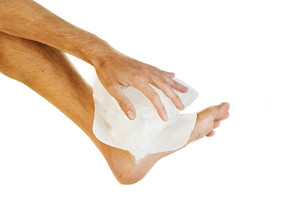 The overstretching and tearing of the ligaments around the ankle joint may often result in an ankle sprain. When the ankle suddenly moves out of its normal range of motion, the ligaments endure additional stress which may lead to a tear. This can be a common occurrence in sporting activities, but can also happen in everyday movements such as stepping off a curb. High-heel wearers also need to be careful, as tripping may be common due to unstable shoes. Immediate pain accompanied by tenderness is often felt because of the damage done to the ligaments. Swelling and bruising around the ankle is typical and may cause the ankle to feel unstable, resulting in difficulty walking. An MRI or X-ray is sometimes necessary in determining the severity of the sprain and in ruling out a possible fracture. Typically, elevating the foot and wearing ankle supports or braces may aid in reducing swelling, making the foot feel more comfortable. Please consult with a podiatrist immediately if you think you might have an ankle sprain.
The overstretching and tearing of the ligaments around the ankle joint may often result in an ankle sprain. When the ankle suddenly moves out of its normal range of motion, the ligaments endure additional stress which may lead to a tear. This can be a common occurrence in sporting activities, but can also happen in everyday movements such as stepping off a curb. High-heel wearers also need to be careful, as tripping may be common due to unstable shoes. Immediate pain accompanied by tenderness is often felt because of the damage done to the ligaments. Swelling and bruising around the ankle is typical and may cause the ankle to feel unstable, resulting in difficulty walking. An MRI or X-ray is sometimes necessary in determining the severity of the sprain and in ruling out a possible fracture. Typically, elevating the foot and wearing ankle supports or braces may aid in reducing swelling, making the foot feel more comfortable. Please consult with a podiatrist immediately if you think you might have an ankle sprain.
Ankle sprains are common but need immediate attention. If you need your feet checked, contact one of our podiatrists from Lovely Foot Associates, PC. Our doctors can provide the care you need to keep you pain-free and on your feet.
How Does an Ankle Sprain Occur?
Ankle sprains take place when the ligaments in your ankle are torn or stretched beyond their limits. There are multiple ways that the ankle can become injured, including twisting or rolling over onto your ankle, putting undue stress on it, or causing trauma to the ankle itself.
What Are the Symptoms?
Preventing a Sprain
Treatment of a Sprain
Treatment of a sprain depends on the severity. Many times, people are told to rest and remain off their feet completely, while others are given an air cast. If the sprain is very severe, surgery may be required.
If you have suffered an ankle sprain previously, you may want to consider additional support such as a brace and regular exercises to strengthen the ankle.
If you have any questions please feel free to contact our office located in Johnstown, PA . We offer the newest diagnostic and treatment technologies for all your foot and ankle needs.
 If you experience pain in between the toes or in the bottom of your feet, there's a chance that you may have Morton’s neuroma. The condition is a result of the irritation or thickening of a plantar digital nerve located between the toes. It typically starts with a tingling sensation, then may gradually worsen until it becomes a sharp, shooting pain. The foot may feel numb, and some people also experience pain while walking. Morton’s neuroma may also cause damage to the nerves in the foot. Causes include wearing ill-fitting shoes and athletic activities, like running. Both of these put pressure on the foot which can lead to Morton’s neuroma. Flare-ups can be frequent and may occur over a period of weeks before going away again. Treatment can include simple lifestyle changes such as wearing comfortable shoes and reducing high-impact activities. Only a podiatrist can provide a proper diagnosis however, so be sure to contact yours if you experience pain in the feet.
If you experience pain in between the toes or in the bottom of your feet, there's a chance that you may have Morton’s neuroma. The condition is a result of the irritation or thickening of a plantar digital nerve located between the toes. It typically starts with a tingling sensation, then may gradually worsen until it becomes a sharp, shooting pain. The foot may feel numb, and some people also experience pain while walking. Morton’s neuroma may also cause damage to the nerves in the foot. Causes include wearing ill-fitting shoes and athletic activities, like running. Both of these put pressure on the foot which can lead to Morton’s neuroma. Flare-ups can be frequent and may occur over a period of weeks before going away again. Treatment can include simple lifestyle changes such as wearing comfortable shoes and reducing high-impact activities. Only a podiatrist can provide a proper diagnosis however, so be sure to contact yours if you experience pain in the feet.
Morton’s neuroma is a very uncomfortable condition to live with. If you think you have Morton’s neuroma, contact one of our podiatrists of Lovely Foot Associates, PC. Our doctors will attend to all of your foot care needs and answer any of your related questions.
Morton’s Neuroma
Morton's neuroma is a painful foot condition that commonly affects the areas between the second and third or third and fourth toe, although other areas of the foot are also susceptible. Morton’s neuroma is caused by an inflamed nerve in the foot that is being squeezed and aggravated by surrounding bones.
What Increases the Chances of Having Morton’s Neuroma?
Morton’s neuroma is a very treatable condition. Orthotics and shoe inserts can often be used to alleviate the pain on the forefront of the feet. In more severe cases, corticosteroids can also be prescribed. In order to figure out the best treatment for your neuroma, it’s recommended to seek the care of a podiatrist who can diagnose your condition and provide different treatment options.
If you have any questions, please feel free to contact our office located in Johnstown, PA . We offer the newest diagnostic and treatment technologies for all your foot care needs.
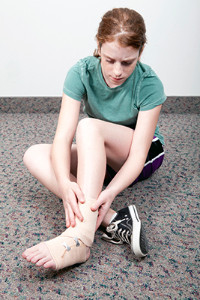 A stress fracture typically occurs in the bottom of the leg or foot, due to repeated pressure incurred on the legs. Several types of athletes may suffer from this condition, although it’s common among long distance runners. Most of the symptoms include general achiness, pain in the affected area, tenderness, and swelling. There are a few different ways to diagnosis a stress fracture, including having an x-ray or bone scan performed. Treatment options include rest, and for severe pain, a plaster cast may be used. When the desired sport is resumed after healing, the legs should be stretched completely to avoid re-injury. If you think you may have a stress fracture in your foot or ankle, please consult with a podiatrist for a proper diagnosis and treatment options.
A stress fracture typically occurs in the bottom of the leg or foot, due to repeated pressure incurred on the legs. Several types of athletes may suffer from this condition, although it’s common among long distance runners. Most of the symptoms include general achiness, pain in the affected area, tenderness, and swelling. There are a few different ways to diagnosis a stress fracture, including having an x-ray or bone scan performed. Treatment options include rest, and for severe pain, a plaster cast may be used. When the desired sport is resumed after healing, the legs should be stretched completely to avoid re-injury. If you think you may have a stress fracture in your foot or ankle, please consult with a podiatrist for a proper diagnosis and treatment options.
Activities where too much pressure is put on the feet can cause stress fractures. To learn more, contact one of our podiatrists from Lovely Foot Associates, PC. Our doctors can provide the care you need to keep your pain free and on your feet.
Dealing with Stress Fractures of the Foot and Ankle
Stress fractures occur in the foot and ankle when muscles in these areas weaken from too much or too little use. The feet and ankles then lose support when walking or running from the impact of the ground. Since there is no protection, the bones receive the full impact of each step. Stress on the feet can cause cracks to form in the bones, thus creating stress fractures.
What Are Stress Fractures?
Stress fractures occur frequently in individuals whose daily activities cause great impact on the feet and ankles. Stress factors are most common among:
Symptoms
Pain from the fractures occur in the area of the fractures and can be constant or intermittent. It will often cause sharp or dull pain with swelling and tenderness. Engaging in any kind of activity which involves high impact will aggravate pain.
If you have any questions please feel free to contact our office located in Johnstown, PA . We offer the newest diagnostic and treatment technologies for all your foot and ankle needs.
Cold feet and hands, in addition to swelling and cramping, may often be symptoms of poor circulation. Many times it can be a sign of other health issues, such as high blood pressure and diabetes. Red or blue toes, tingling in the feet, and unexpected hair loss on the legs may all point to circulation issues. Veins can be damaged, which can then restrict or even stop blood flow and possibly lead to blood clots in the leg. Typically, unhealthy behaviors are contributing factors, and learning to manage them is a good starting point in controlling poor circulation. These may include smoking cigarettes, lack of exercise, or having high cholesterol and blood pressure. Occasionally, using leg massagers may help to stimulate circulation which improves blood flow. Additionally, wearing support hosiery and proper footwear may help your feet to feel better by improving circulation.
Poor circulation is a serious condition and needs immediate medical attention. If you have any concerns with poor circulation in your feet contact one of our podiatrists of Lovely Foot Associates, PC. Our doctors will treat your foot and ankle needs.
Poor Circulation in the Feet
Poor blood circulation in the feet and legs is can be caused by peripheral artery disease (PAD), which is the result of a buildup of plaque in the arteries.
Plaque buildup or atherosclerosis results from excess calcium and cholesterol in the bloodstream. This can restrict the amount of blood which can flow through the arteries. Poor blood circulation in the feet and legs are sometimes caused by inflammation in the blood vessels, known as vasculitis.
Causes
Lack of oxygen and oxygen from poor blood circulation restricts muscle growth and development. It can also cause:
Those who have diabetes or smoke are at greatest risk for poor circulation, as are those who are over 50. If you have poor circulation in the feet and legs it may be caused by PAD and is important to make changes to your lifestyle in order to reduce risk of getting a heart attack or stroke. Exercise and maintaining a healthy lifestyle will dramatically improve conditions.
As always, see a podiatrist as he or she will assist in finding a regimen that suits you. A podiatrist can also prescribe you any needed medication.
If you have any questions please feel free to contact our office located in Johnstown, PA . We offer the newest diagnostic and treatment technologies for all your foot and ankle needs.
 Wide receiver Marqise Lee of the Jacksonville Jaguars recently sprained his right ankle. Lee suffered the injury during the Jaguars’ overwhelming victory over the Houston Texans, 45-7. The injury occurred during the first quarter, but he wasn’t ruled out until the second half. It is unknown when Lee will be able to return or if he’ll make it back before the end of the season. Lee is the Jaguars’ leading receiver, so his loss will be a huge blow to the team.
Wide receiver Marqise Lee of the Jacksonville Jaguars recently sprained his right ankle. Lee suffered the injury during the Jaguars’ overwhelming victory over the Houston Texans, 45-7. The injury occurred during the first quarter, but he wasn’t ruled out until the second half. It is unknown when Lee will be able to return or if he’ll make it back before the end of the season. Lee is the Jaguars’ leading receiver, so his loss will be a huge blow to the team.
Sports related foot and ankle injuries require proper treatment before players can go back to their regular routines. For more information, contact one of our podiatrists of Lovely Foot Associates, PC. Our doctors can provide the care you need to keep you pain-free and on your feet.
Sports Related Foot and Ankle Injuries
Foot and ankle injuries are a common occurrence when it comes to athletes of any sport. While many athletes dismiss the initial aches and pains, the truth is that ignoring potential foot and ankle injuries can lead to serious problems. As athletes continue to place pressure and strain the area further, a mild injury can turn into something as serious as a rupture and may lead to a permanent disability. There are many factors that contribute to sports related foot and ankle injuries, which include failure to warm up properly, not providing support or wearing bad footwear. Common injuries and conditions athletes face, including:
Sports related injuries are commonly treated using the RICE method. This includes rest, applying ice to the injured area, compression and elevating the ankle. More serious sprains and injuries may require surgery, which could include arthroscopic and reconstructive surgery. Rehabilitation and therapy may also be required in order to get any recovering athlete to become fully functional again. Any unusual aches and pains an athlete sustains must be evaluated by a licensed, reputable medical professional.
If you have any questions please feel free to contact our office located in Johnstown, PA . We offer the newest diagnostic and treatment technologies for all your foot and ankle needs.
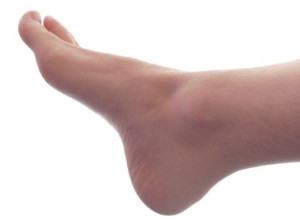 If numbness, tingling and pain are experienced in the feet, you may have a condition called tarsal tunnel syndrome. This occurs when the tibial nerve is squeezed in the tarsal tunnel thereby causing varying sensations in the foot. Causes may include flat feet, arthritis, or a possible ankle sprain. Early symptoms consisting of tingling or numbness in the foot may be present and then vanish, but will become more relentless as the nerve pressure increases. A diagnosis may become necessary and is often arrived at by a physical exam or x-ray. To encourage healing, it’s important to rest the foot as often as possible and to schedule a consultation with a podiatrist for viable treatment options.
If numbness, tingling and pain are experienced in the feet, you may have a condition called tarsal tunnel syndrome. This occurs when the tibial nerve is squeezed in the tarsal tunnel thereby causing varying sensations in the foot. Causes may include flat feet, arthritis, or a possible ankle sprain. Early symptoms consisting of tingling or numbness in the foot may be present and then vanish, but will become more relentless as the nerve pressure increases. A diagnosis may become necessary and is often arrived at by a physical exam or x-ray. To encourage healing, it’s important to rest the foot as often as possible and to schedule a consultation with a podiatrist for viable treatment options.
Tarsal tunnel syndrome can be very uncomfortable to live with. If you are experiencing tarsal tunnel syndrome, contact one of our podiatrists of Lovely Foot Associates, PC. Our doctors can provide the care you need to keep you pain-free and on your feet.
Tarsal Tunnel Syndrome
Tarsal tunnel syndrome, which can also be called tibial nerve dysfunction, is an uncommon condition of misfiring peripheral nerves in the foot. The tibial nerve is the peripheral nerve in the leg responsible for sensation and movement of the foot and calf muscles. In tarsal tunnel syndrome, the tibial nerve is damaged, causing problems with movement and feeling in the foot of the affected leg.
Common Cause of Tarsal Tunnel Syndrome
The Effects of Tarsal Tunnel Syndrome
A physical exam of the leg can help identify the presence of tarsal tunnel syndrome. Medical tests, such as a nerve biopsy, are also used to diagnose the condition. Patients may receive physical therapy and prescriptive medication. In extreme cases, some may require surgery.
If you have any questions please feel free to contact our office located in Johnstown, PA . We offer the newest diagnostic and treatment technologies for all your foot and ankle needs.
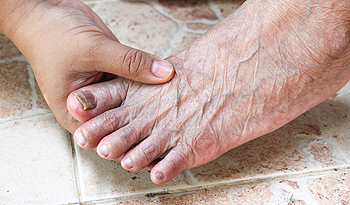 If your toenails become thick and begin turning yellow, chances are you may have a fungal infection. Also referred to as onychomycosis (OM), many people suffer from this, especially those afflicted with other health issues including diabetes or a weakened immune system. This type of fungus grows and lives in moist environments that are warm, typically affecting people whose feet sweat frequently. The infection may occur because of small cuts on the toes or under the nail, thereby allowing the fungi to enter. Prevention of this condition may include drying the feet thoroughly, keeping nails short, and wearing proper footwear in public showers. Please consider a consultation with a podiatrist for optimum treatment options.
If your toenails become thick and begin turning yellow, chances are you may have a fungal infection. Also referred to as onychomycosis (OM), many people suffer from this, especially those afflicted with other health issues including diabetes or a weakened immune system. This type of fungus grows and lives in moist environments that are warm, typically affecting people whose feet sweat frequently. The infection may occur because of small cuts on the toes or under the nail, thereby allowing the fungi to enter. Prevention of this condition may include drying the feet thoroughly, keeping nails short, and wearing proper footwear in public showers. Please consider a consultation with a podiatrist for optimum treatment options.
For more information about treatment, contact one of our podiatrists of Lovely Foot Associates, PC. Our doctors can provide the care you need to keep you pain-free and on your feet.
Toenail Fungus Treatment
Toenail fungus is a condition that affects many people and can be especially hard to get rid of. Fortunately, there are several methods to go about treating and avoiding it.
Antifungals & Deterrence
Oral antifungal medicine has been shown to be effective in many cases. It is important to consult with a podiatrist to determine the proper regiment for you, or potentially explore other options.
Applying foot powder on the feet and shoes helps keep the feet free of moisture and sweat.
Sandals or open toed shoes – Wearing these will allow air movement and help keep feet dry. They also expose your feet to light, which fungus cannot tolerate. Socks with moisture wicking material also help as well.
If you have any questions please feel free to contact our office located in Johnstown, PA . We offer the newest diagnostic tools and technology to treat your foot and ankle needs.